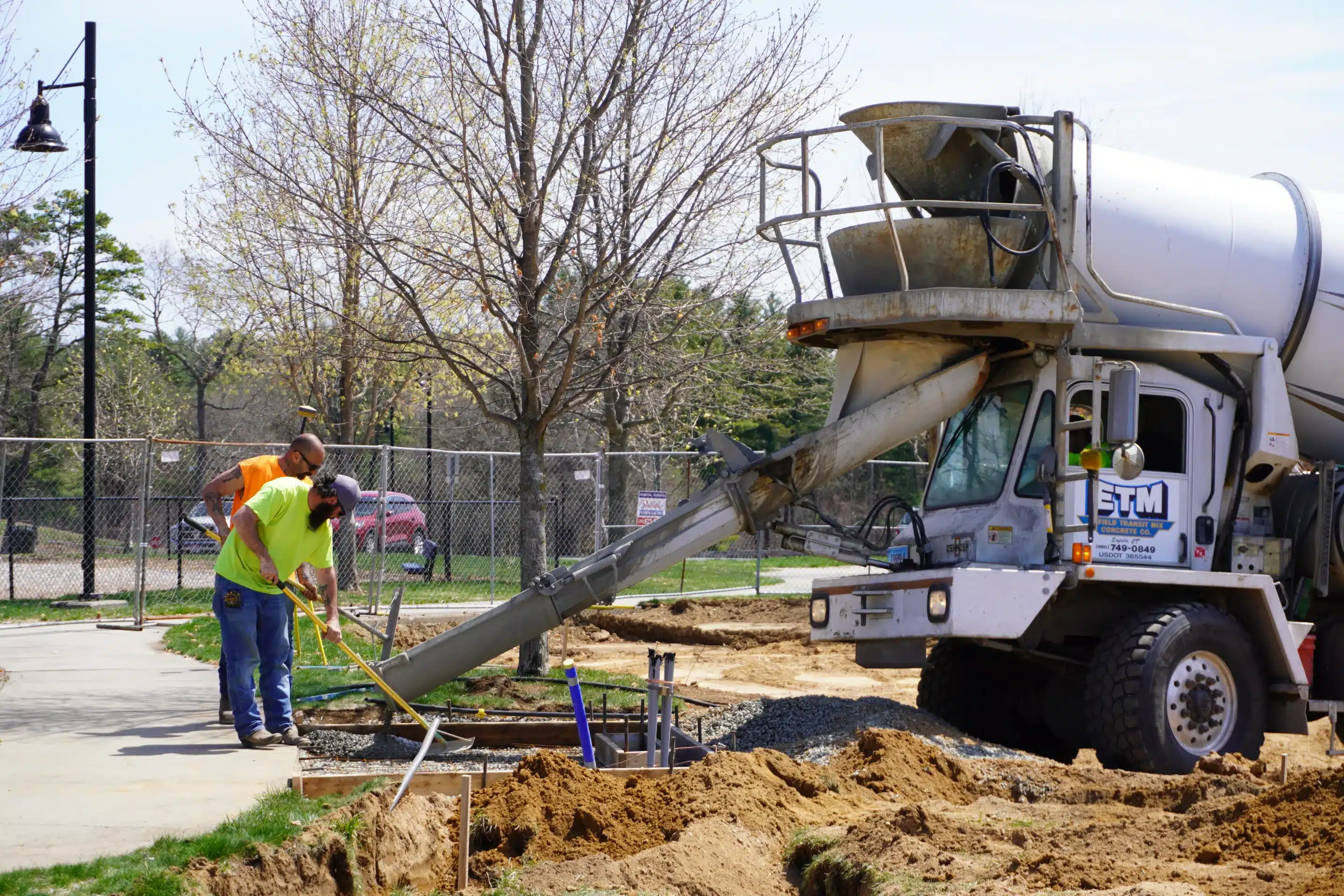The splash pad at Whalley Park is under construction. The first delivery of concrete was made on April 23.
Reminder Publishing photo by Cliff Clark
SOUTHWICK — It only took nearly two years, but construction on the splash pad at Whalley Park has started.
“It should be ready for summer,” said the town’s Chief Administrative Officer Nicole Parker on April 23.
She said the project started earlier this month when Crestview Construction began preparing the ground for the pad’s installation.
On the morning of April 23, a concrete truck from Enfield Transit Mix began pouring slurry onto the area that will become the entrance to the splash pad.
Town Meeting approved allocating $294,000 in Community Preservation Committee funds to build the splash pad in May 2023.
There was some expectation that the pad might be ready in the late spring or early summer of 2024 by the time the Town Beach opened for the summer, but it didn’t.
Members of the Parks and Recreation Commission meetings, starting in March 2024, discussed the project and there were assurances from Committee member John Whalley III that Crestview Construction would start in June 2024 — it didn’t again.
Then in August 2024, Crestview Construction was ready to start site work, but Parker paused it after learning there was no one to supervise its installation.
There was another attempt to start the site work in October 2024, but that didn’t pan out either.
After that Rob Levesque of R Levesque Associates, Inc. was named the project’s construction supervisor.
Since the CPC funds were allocated, there have been lingering questions about the estimated annual $17,000 water bill for the pad’s operation.
That dollar amount was based on the pad using 63 gallons per minute and running five hours a day for 92 days. That would mean about 1.738 million gallons of water, with an estimated annual cost of between $16,000 and $17,000.
However, the 63 gallons of water per minute is for all the fixtures running at the same time.
The pad’s fixtures were purchased from Waterplay Solutions and the system can be programed to allow only one, two, three or more fixtures to operate at the same time, according to the company’s website.
The splash pad will have three towers that rain down water, and a large ring, big enough for children to walk through, that would have water spraying inside from the ring’s edge. There will also be two tulip-shaped fixtures spraying up from the park’s deck, and two “pop-it” sprayers.
The system will shut off automatically when users aren’t present to turn it on. How long the various fixtures continue running after being activated can also be adjusted, as another means of saving water.
The water used for the pad will not be recirculated but disposed of using a method called underground injection, where the water is funneled into a perforated plastic. Because the soil at the park is primarily sand, the water will seep into it naturally.
When summer arrives, it’s almost inevitable that mandatory water restrictions will be implemented in town and the complaints about the spray pad being able to operate while residents can’t water their lawns or wash their vehicles.
However, the state Department of Environmental Protection permits and regulates the operations of municipal swimming pools and splash pads.
It allows the operation of splash pads even if mandatory water bans or restrictions are issued by the state because the pad is used for cooling purposes.


